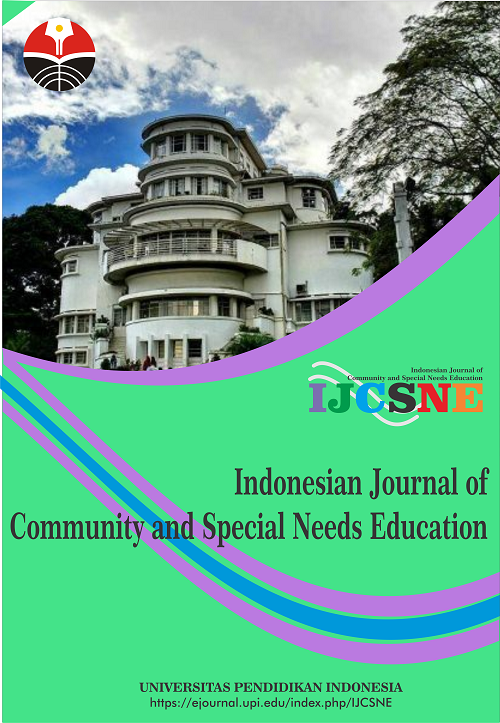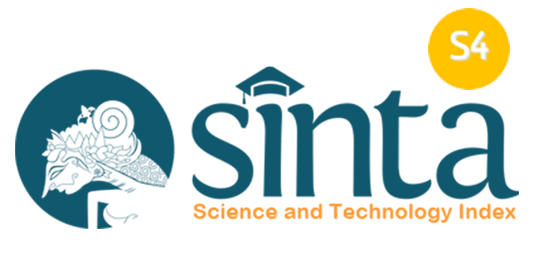Usability of Assistive Technologies for the Learners with Hearing Impairment in Federal College of Education
Abstract
The study was geared towards the usability of assistive technologies for learners with hearing impairment. Descriptive research of the Survey design was adopted. The sample comprised of one hundred and ten hearing impaired students of Federal College of Education (Special) Oyo. An adopted checklist and a structured questionnaire were utilized in collecting data while simple percentages, mean standard deviation, and t-test was used to analyze the data collected. The results of the study indicated that assistive technologies in FCE (SP) Oyo are generally available and functional; the use of assistive technologies among the learners with hearing impairment in FCE (SP) Oyo is high. Also, the result indicated that learners with hearing impairment in FCE (SP) Oyo have a positive attitude towards the use of assistive technologies. There was no significant difference between male and female learners with hearing impairment in the use of assistive technologies in FCE (SP) Oyo. It was recommended among others that learners with hearing impairment should be encouraged to adopt the ultimate use of assistive technologies.
Keywords
Full Text:
PDFReferences
Agba, J. U., Olayi, J. E., and Ewa, J. A. (2010). Deployment and use of assistive technology devices among special needs persons in Nigeria. The Special Educator, Journal Publication of Nigeria Association of Special Education Teachers (NASET), 8(2), 80-94.
Ahmad, F. K. (2014). Assistive provisions for the education of students with learning disabilities in Delhi schools. International Journal of Fundamental and Applied Research, 15(2), 9-16.
Ahmad, F. K. (2015). Challenging exclusion: Issues and concerns in inclusive education in India. Researchpaedia, 15(2), 15-32.
Borg, J., Larsson, S., and Ostergren, P. O. (2011). The right to assistive technology: For whom, for what and by whom? Journal of Disability and Society, 26(2) 151-167.
Bouck, E. C., Shurr, J. C., Tom, K., Jasper, A. D., Bassette, L., Miller, B., and Flanagan, S. M. (2012). Fix it with tape: Repurposing technology to be assistive technology for students with high-incidence disabilities. Preventing School Failure: Alternative Education for Children and Youth, 56(2), 121-128.
Comber, C., and Colley, A. (1997). The effects of age, gender and computer experience upon computer attitudes. Educational Research, 39(2), 123-133.
Dhindsa, H. S., and Shahrizal-Emran. (2011). Using interactive whiteboard technology-rich constructivist learning environment to minimize gender differences in chemistry achievement. International Journal of Environmental and Science Education, 6(4), 393-414.
Ewa, J. A. (2013). Understanding the myth of inclusion: Teachers' preparation. Journal of Exceptional People, 2(3), 95-100.
Gal, E., Schreur, N., and Engel-Yeger, B. (2010). Inclusion of children with disabilities: Teachers’ attitudes and requirements for environmental accommodations. International Journal of Special Education, 25(2), 89-99.
Gitlow, L., Dininno, D., Choate, L., Luce, R. A., and Flecky, K. (2011). The provision of assistive technology by occupational therapists who practice in mental health. Occupational Therapy in Mental Health, 27(2), 178-190.
Kaino, L. M. (2008). Usefulness and enjoyment of using computers in learning. A gender dimension. Gender and Behaviour, 6(2), 1841-1857.
Kirkpatrick, H., and Cuban, L. (1998). What the research says about gender differences in access use, attitudes and achievement with computers. Journal of Educational Technology, 38(4), 56-61.
Li, N., and Kirkup, G. (2007). Gender and cultural differences in internet use: A study of China and the UK. Journal of Computers and Education, 48(2), 301-317.
O’Hara, S., and Pritchard., R. (2008). Hypermedia authoring as a vehicle for vocabulary development in middle school English as a Second Language Classrooms. The clearing house. A Journal of Educational Strategies, Issues and Ideas, 82(2), 60–65.
Praisner, C. L. (2003). Attitudes of elementary school principals toward the inclusion of students with disabilities. Exceptional Journal of Inclusive Education, 169(2), 135-145.
Ramchand, B., and Dummugudem. (2014). Inclusion education as solution to barriers of CWSN and answer for their success. International Journal of Humanities and Social Science Invention, 3(8), 43-48.
Seok, S., and DaCosta, B. (2013). Development and standardization of an assistive technology questionnaire using factor analyses: Eight factors consisting of 67 items related to assistive technology practices. Assistive Technology: The Official Journal of RESNA, 6(4), 75-80.
Yusuf, M.O., Fakomogbon, M.A. and Issa, A.I. (2012). Availability of assistive technologies in Nigerian educational institutions. International Journal of Social Sciences and Education, 2(1), 44-55.
Zhou, Li., Parker, A. T., Smith, D. W., and Griffin-Shirley, N. (2009). Assistive technology for students with visual impairments: Challenges and needs in teacher’s preparation programs and practice. Journal of Visual Impairment and Blindness, 105(4), 197-210.
DOI: https://doi.org/10.17509/ijcsne.v3i1.44739
Refbacks
- There are currently no refbacks.
Copyright (c) 2022 Universitas Pendidikan Indonesia

This work is licensed under a Creative Commons Attribution-ShareAlike 4.0 International License.















